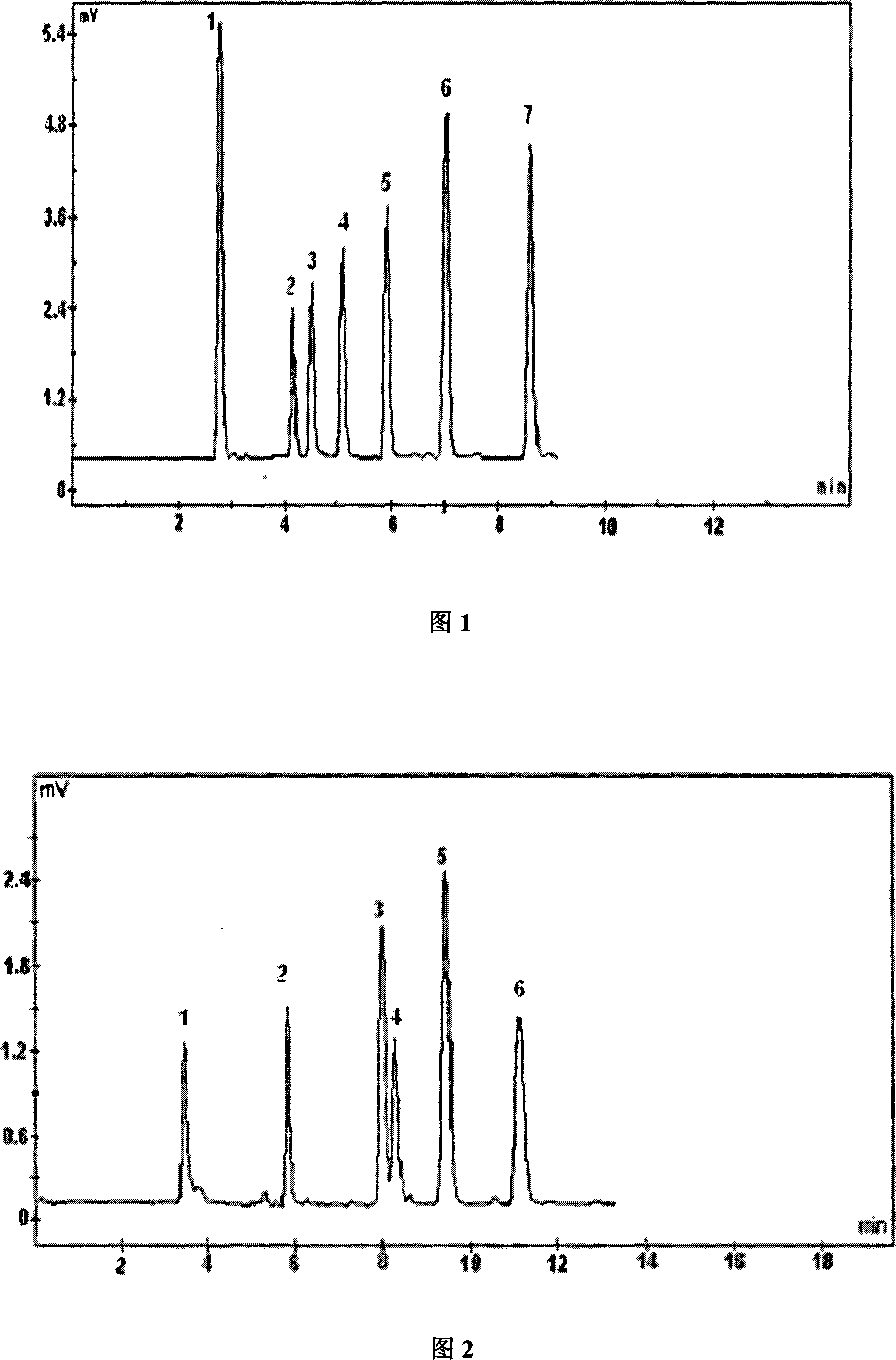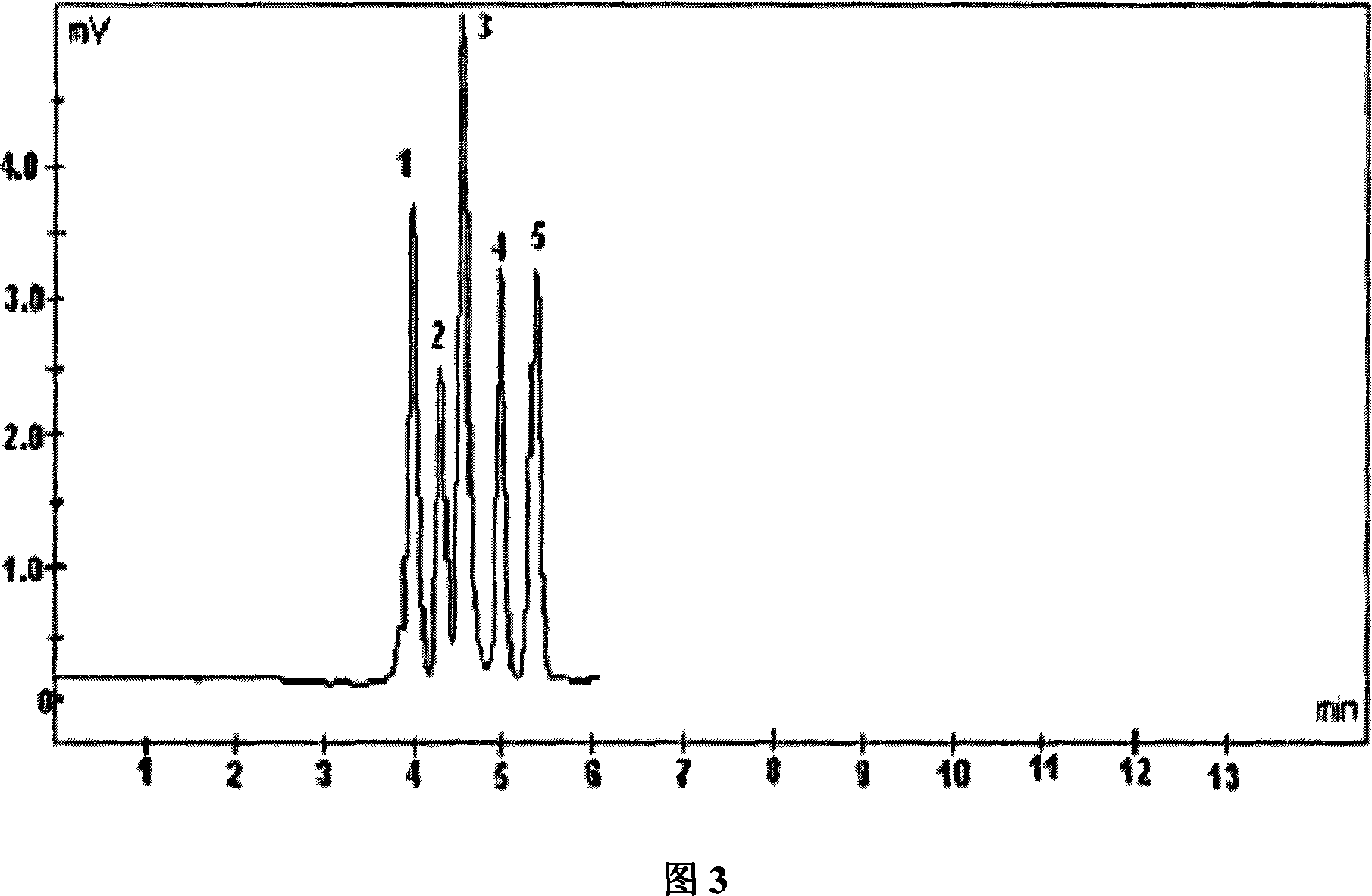Formula of raw material of reversed phase ion exchange electrochromatography column, and preparation method
An electrochromatographic column and reversed-phase ion technology, applied in the field of electrochromatography, can solve problems such as research limitations and inability to dissolve it, and achieve the effect of wide application range of pH and good column permeability
- Summary
- Abstract
- Description
- Claims
- Application Information
AI Technical Summary
Problems solved by technology
Method used
Image
Examples
preparation example Construction
[0015] The steps of preparation method are:
[0016] 1) Pretreatment of the column: Rinse the empty capillary column with 0.1-1mol / l HCl solution for about 15-30min, then rinse with deionized water for 10-15min, then rinse with 0.1-1mol / l NaOH for 2h-3h, then Rinse with methanol for 15-20 minutes, blow dry with nitrogen and set aside.
[0017] 2) This step is optional: add a 1-2:1 mixture of methanol and methacryloxypropyltrimethoxysilane to the treated capillary in step 1), and react at 40-60°C for 12h-24h. Then rinse with methanol for 10min to 15min. Blow dry with nitrogen at 50-70°C.
[0018] 3) In-column synthesis: mix the raw materials according to the above formula, ultrasonically vibrate the resulting mixture for 10-15 minutes, blow nitrogen to remove the dissolved oxygen in the mixture, then inject the mixture into the treated capillary, seal both ends of the capillary and Immerse in a 60°C water bath and react for 5-20 hours. After the reaction is completed, wash t...
Embodiment 1
[0020] 1. Column pretreatment
[0021] First rinse the capillary empty column with 0.1mol / l HCl solution for about 0.5h, then rinse it with deionized water for 10min, then rinse it with 0.1mol / l NaOH for 2h~3h, then rinse it with methanol for 15min, and dry it with nitrogen gas for later use.
[0022] 2. This step is optional. Add a 1:1 mixture of methanol and methacryloxypropyltrimethoxysilane to the capillary treated in step 1, and react at 60°C for 12h to 24h. Then rinse with methanol for 10min to 15min. Blow dry at 70°C with nitrogen.
[0023] 3. In-column synthesis
[0024] Octadecyl methacrylate, ethylene glycol dimethacrylate, 3-propanesulfonic acid methacrylate, cyclohexanol and 1,4-butanediol are respectively 17.82% by weight: 12.00%: 0.18 %: 49.00%: 21.00%, the consumption of the added initiator azobisisobutyronitrile (AIBN) is 1% of the polymer monomer consumption, after the mixture is ultrasonically vibrated for 20min, blow nitrogen for 10min to remove dissolve...
Embodiment 2
[0026] Octadecyl methacrylate, ethylene glycol dimethacrylate, 2-methylpropionyl ethyltrimethylammonium ethyl sulfate, cyclohexanol and 1,4-butanediol are respectively by weight 17.70%: 12.00%: 0.30%: 45.50%: 24.50%, the amount of the added initiator azobisisobutyronitrile is 1% of the amount of the polymer monomer, after the mixture is ultrasonically oscillated for 20 minutes, nitrogen gas is blown for 10 minutes to remove the dissolved oxygen, inject the reaction solution into a capillary of a certain length that has been treated according to step 2, seal both ends of the capillary, and immerse in a water bath at 60°C, and react for 10 hours. After the reaction is completed, first use methanol and then use Rinse the mobile phase to remove the reagents that may remain in the capillary. Finally, the column is equilibrated for 15 hours in a low voltage state to perform normal experiments or save for future use.
PUM
 Login to View More
Login to View More Abstract
Description
Claims
Application Information
 Login to View More
Login to View More - R&D
- Intellectual Property
- Life Sciences
- Materials
- Tech Scout
- Unparalleled Data Quality
- Higher Quality Content
- 60% Fewer Hallucinations
Browse by: Latest US Patents, China's latest patents, Technical Efficacy Thesaurus, Application Domain, Technology Topic, Popular Technical Reports.
© 2025 PatSnap. All rights reserved.Legal|Privacy policy|Modern Slavery Act Transparency Statement|Sitemap|About US| Contact US: help@patsnap.com


